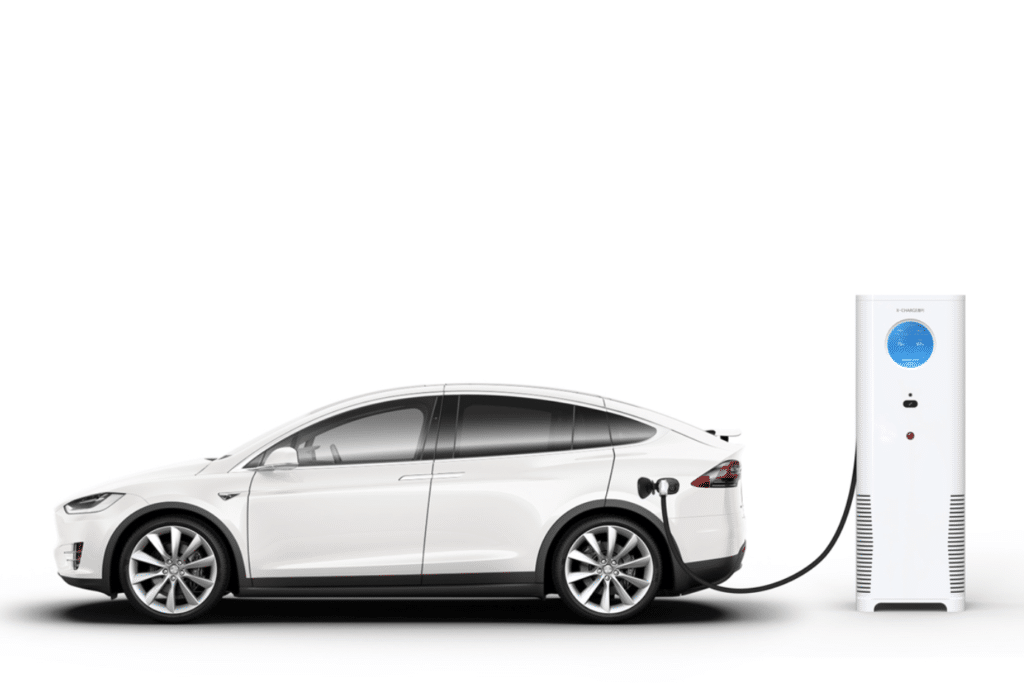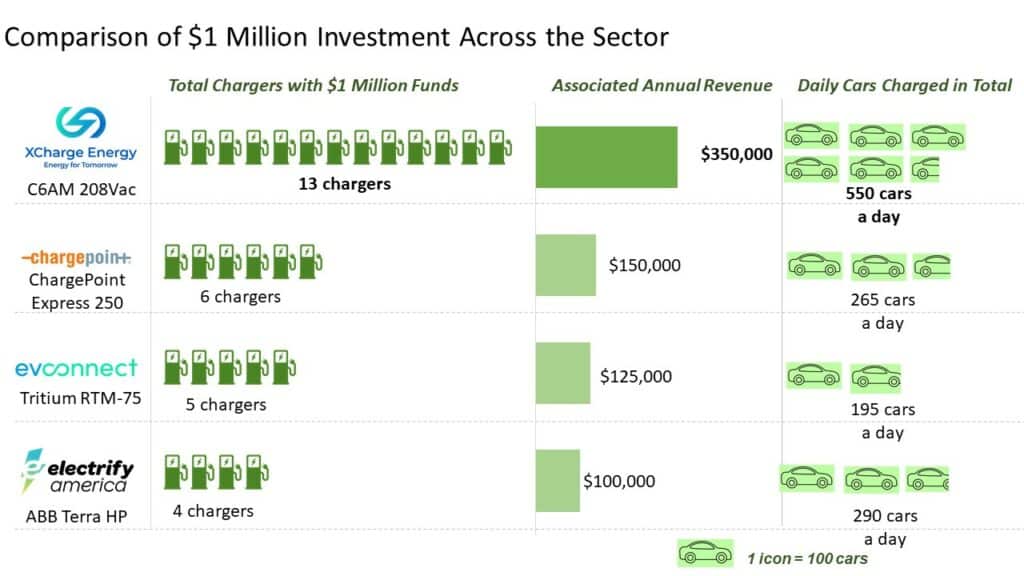Aatish Patel is the President and Co-founder of XCharge North America, leading the charge to enhance the potential of electric vehicle adoption nationally by improving EV charger accessibility and charging capabilities.
The EV Report recently connected with Aatish to understand XCharge North America, a company focused on innovating the North American grid infrastructure to strengthen EV Charging Stations’ accessibility and efficiency for drivers. Notably, the company is creating solutions with robust energy storage and bidirectional capabilities that eliminate additional infrastructure and enable an efficient way to operate the EV charging business.
Can you provide some details on how XCharge North America came about?
Previously, with the experience in hospitality management, I was looking to install Level 3 chargers at one of my properties. I spent a fair amount of time trying to find a DC charger that didn’t cost an arm and a leg to operate but ended with nothing. Available products for purchase required extensively upgrade property to function which would lead to a lot of money and time.
Many of the chargers sold in the US were based on EU/APAC standards; meaning they utilize electrical inputs. Nobody was making chargers for the US grid, and when conducting spec solicitation, my research concluded that there were no native input-based chargers available. When beginning my involvement with XCharge, their willingness to make it native to the US grid, really drew me into a deeper partnership, especially with their focus on engineering, R&D and independent operations.
Originally, I started with the company as their customer, but that quickly morphed into something more. I spent a lot of time working with their engineering team to create a product specifically meant for the US grid. Two years later, we had something that many considered (and still do) impossible – a 208vac input charger that can output up to 95kW (higher output is under development). Given the work I did with these people, the relations I developed with the leaders, and the vision we had for the space…we decided to shake hands and go at the US market together. And now we have XCharge North America.

What’s your company mission and how do your solutions support this? Is there anything specific about XCharge solutions that make them more effective compared to other North American options?
Our goal is to ensure an accessible and stable energy supply within the North American electrical grid. This is achievable by building out a sustainable and powerful electrical network that is not only high-performance, but also scalable and eco-friendly in all aspects. At the same time, XCharge North America’s products are designed to be deployable in all areas, scalable through efficient investment, and long-lasting.
Providing solutions and flexibility (meaning, adaptable products that maximize existing grid infrastructure and offers functions to limit power and accommodate a site with capacity constraints) that are not yet seen in the industry has allowed us to tap into markets that many of our competitors consider ‘tough’. We’re focused on making sure our products are compatible with the infrastructure they are intended to be used on. The solutions are designed to be as plug-and-play as possible, resulting in lower costs and more places for installation.
Are there specific hurdles preventing widespread EV adoption – such as accessibility of chargers, the speed, or installation cost?
The accessibility of EV charging is probably the biggest thing holding people back from going electric. The upfront costs of EVs are starting to get to the point where it’s competitive with gasoline cars; longer-term costs are known to be lower. The biggest issue is figuring out how to charge. Gas stations are everywhere, so we don’t really think twice about hopping in our car and going about our day, but with EVs, it’s not as simple.
Additionally, location plays an important factor in adoption. Both rural and metro areas can benefit from increased EV charger availability; however, both are challenging to develop. Rural environments have too little infrastructure while metros contain abundant infrastructure (not as much free space). Better and smarter EV charging infrastructure in these areas can not only allow for more EVs on the road, but also superior energy distribution capabilities.
Are there specific steps or investments that make EV charging installation more cost-effective? How do federal incentives influence the growth of the US EV industry?
For starters, optimizing for what’s already there, versus trying to upgrade and upfit, can make EV charging installation more cost-effective. A lot of new EV Charging installs involve expensive and time-consuming site upgrades to create sites suitable for chargers. To make things smooth and cost-effective, it would be easier to build sites according to what functionalities they can support. But ultimately, having a charger is better than having no charger at all.
Regarding federal incentives, for the EV themselves, it’s helping – no question. For infrastructure, these programs are hindering market adoption. While good in theory, the programs in practice are flawed in scope and reach, as they don’t really allow eligibility for anything currently available or truly usable for sites. But when incentives are available, people want to wait for them, which does not help move things quickly.

How is the rise of EVs affecting North America’s electrical grid?
Hard to say for sure, because grids vary from area to area in the USA, but EVs will increase the overall utilization of electricity. If a person charges an electric vehicle from 20% to 80%, it can draw as much power as 1-2 households use in a day. So as EV adoption continues to rise, so will overall domestic energy consumption. In some markets – notably California and Texas – there are already strains due to general increased electricity usage…additional load from EVs will be interesting to see.
As we anticipate constraints on the on-demand supply side, we’re introducing products like the Net Zero Series, which can accommodate, not only EVs but also, general grids by acting as Power Banks. By charging up and storing energy during low usage times (or through renewables), we can help alleviate the strain that may be seen through general increased electricity usage.
Are there industries overlooking the benefit of EV charging infrastructure — and what types of EV chargers would function best in these industries?
For fleets, EVs offer operating costs and lifetimes that are unseen with conventional ICE vehicles. Finding chargers that are capex efficient, reliable, and have strong software management capabilities is key.
For hospitality: EV charging is a service and additional function to properties that can really help drive additional revenue and savings. Giving customers the ability to charge, from a business point of view, generates additional revenue. Also, using chargers with B2G/V2G functions can help reduce overhead expenses.
Click HERE to learn more about XCharge North America.








